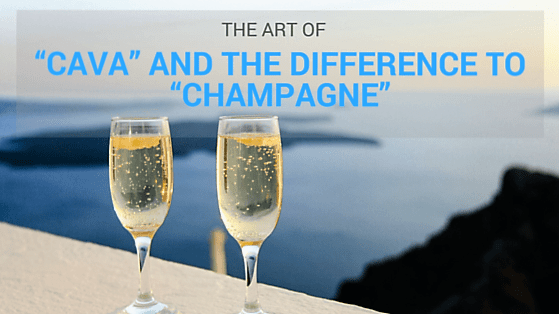THE ART OF CATALAN “CAVA” AND THE DIFFERENCE TO FRENCH “CHAMPAGNE”

A lot of our customers ask us during the Food Lover tours about Cava and the difference between Cava and Champagne. In this article, you will find specific explanations about it and additionally our recommendations for Cava Bars in Barcelona.
So what are the differences between these two popular Sparklers?
The real “Champagne” can only come from the relatively small Champagne region of France and follows a specific traditional production, with very expensive grapes needed to be picked by hand.
The long lasting fermentation process gives the Champagne the characteristic, complex and unique flavours appreciated by so many people.
One needs to fulfill the specific method of allowing the wine to continue fermenting in the bottle for a period of time, to be allowed to officially use the label “Champagne.”
Champagne, as well as Cava, is made with the famous “Méthode Champenoise”, but only in the Champagne región is used this term. In Spain, this process is better known as the “Método Tradicional” which means the “Traditional Method”.
The production of Cava is similar to the one of the Champagne. They are both fermented in the bottle, but the grapes used for Cava are mainly Macabeu, Parellada & Charello and most of the Cavas are made from 2 or 3 different kinds. The grapes for Champagne are usually Pinot Noir, Pinot Meunier & Chardonnay, which are indigenous to the Champagne region.
Another interesting detail is, that the origin of Cava can be from not just only one area, but from a few different, official regions in Spain. Probably the most renown production area for Cava is close by and to the south of Barcelona, called Penedès.
Our recomendations for CAVA Bars in Barcelona:
- El Xampanyet:
- Champañeria Barcelona:
- La Vinya del Senyor:
- Cavamar:
